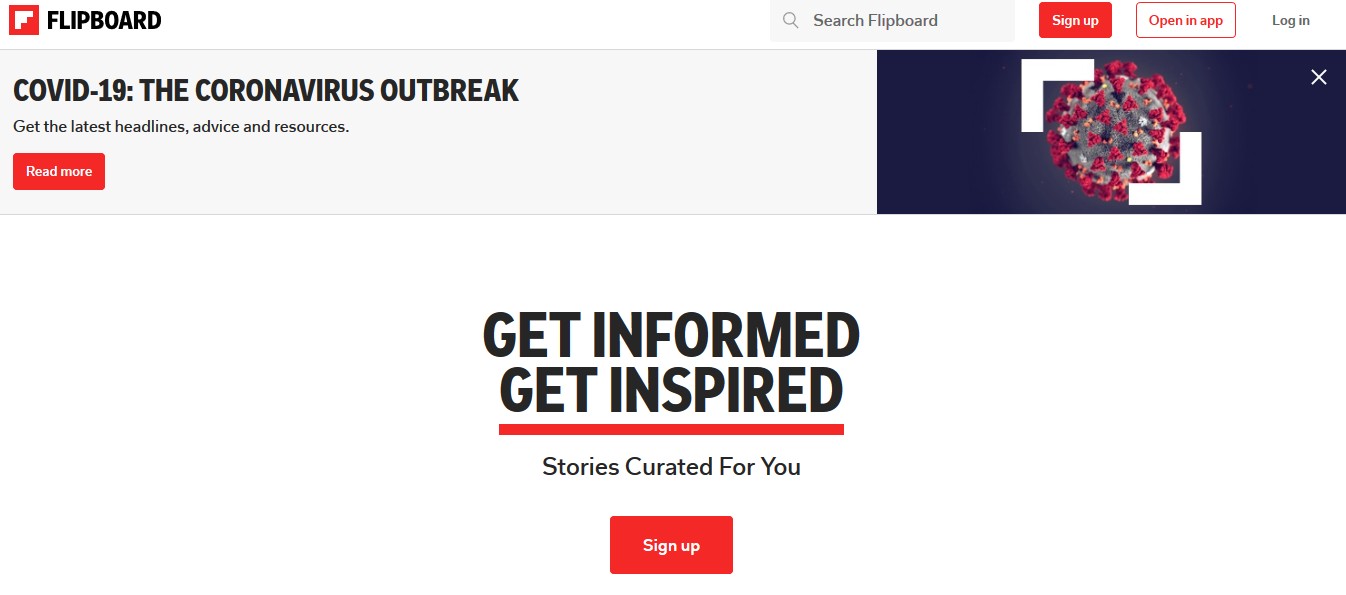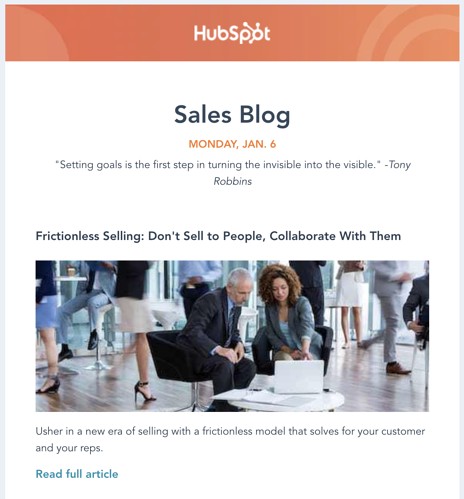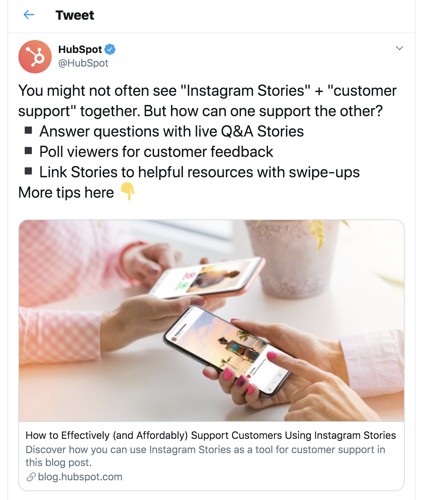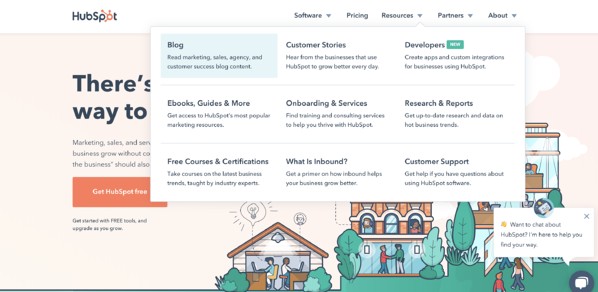The initial phase of starting your blog is one of the most fun and exciting parts of your journey.
After pouring all that time and effort into the ideation process, researching your target market, and narrowing in on your niche — this is the part where your efforts begin to pay off.
However, in order for your blog to be successful from the get-go, there are certain steps you have to take to lay the groundwork. That's right: There's research involved in this stage, too.
If you don't have a good plan of action for the launch of your blog, things can fall apart during execution.
Here, we'll walk you through a simple but thorough blog promotion checklist.
Read on to learn about all the things you should have in place when you first go live with your blog, plus, what you can do to ensure your blog is successful for the long-run.
Benefits to a Blog Promotion Checklist
You might be thinking, "Haven't I already done enough planning and research? Let's get the ball rolling!"
Yes, you have put a lot of hours into the blog already. But without a proper promotion plan, all that hard work will go to waste. Nobody wants to have a grand opening to crickets.
By having a checklist to work with, you gain the following benefits:
- Less procrastination: It's easy to slip up once all the planning and research is done and go a little 'easy' on your execution. Focusing on your efforts at this stage will change that.
- Better content management: As your blog goes live, you'll still have to write a consistent amount of quality content regularly and keep up with the momentum you set at the start. Having the right plan and tools to organize your tasks can help you stay on track.
- Better organized marketing: A lot of your efforts at the start of your blog going live will center around its promotion. How else will people know it exists? Knowing what the promotion phase will look like can help you better organize a strong blog marketing strategy.
A lot of this is dependent around how you structure your time and activities. It's a lot like having a standard operating procedure for blog promotion.
Rolling out your blog in a phase-by-phase approach will add the above perks and ensure the entire process of execution won't seem as overwhelming.
Pre-Promotion Checklist
Before starting a blog promotion campaign, you need to make sure that it's ready for the world to see.
Remember: not all blogs get the spotlight. The ones that do are there for a reason — they have a strong selling point. No influencer will be interested in promoting a spammy blog.
As such, you have to find out what makes your blog stand out and work towards promoting that.
Let's see what you should put on your pre-promotion checklist.
1. Figure out whether you need to hire freelancers.
Promoting your blog is no easy feat! It involves a lot of overlapping tasks and resources.
Depending on where you are, that can be anything from doing the campaign yourself to hiring a bunch of freelancers.
In my case, I do a combination of both. I do the important tasks (think: strategy, optimization, etc.) myself, and outsource menial tasks to my VAs.
This option is great if you have other priorities, as promoting your blog by yourself can be quite the hustle. What's more, it's typically relatively cheap to hire freelancers. Plus, you can hire several freelancers and manage a remote team to work on your blog while on-the-go.
Another important factor to look into is organization, which involves how you'll go about promotion. Here, you can follow a phase-by-phase approach to focus on what's best first, and even create a solid project management plan to manage your blog promotion strategy.
My point is, promoting a blog is no easy feat, but today, there's several ways to (successfully) promote it without too much time or money. That said, you just need to know your blog well, who you're targeting, and how.
Which brings me to my next point.
2. Make visuals to complement blog posts.
Media like images and videos make your blog posts more visually appealing and memorable. Consumers remember 65% of visual content versus only 10% of written content, meaning that adding visual media to your blogs can help readers retain information and remember your brand.
Another way to help your blog content resonate with readers is to develop original images for your blog. This applies to blog headers as well as original infographics, graphs, and other types of visual media.
Save countless hours by using these pre-made templates to design your infographics.
Visual content can also help drive traffic to your blog. Image alt text alone can help boost your blog SEO — an experiment we ran at HubSpot that saw a 25% increase in blog traffic. (Image alt text also contributes to your blog’s accessibility, an equally important feature to optimize.)
3. Ensure you have high-quality content.
Before you consider how you’ll promote your blog, make sure you’re creating high-quality blog content. Creating content for the sake of creating content won’t help your business in the long run. Your blog should contain helpful, unique content that relates to your product and brand.
Aside from how-to content and ultimate guides, feature guest writers on your blog, too. Not only will this mix up the type of content you’re publishing, but it will highlight different voices from your network, employee base, and even current customers, which provides valuable insight for readers.
Don’t shy away from trends. While every blog needs evergreen content, content based on trends, seasonality, and recent news can keep your brand relevant and blog interesting.
Remember, even the best promotion plan won’t matter if you’re promoting low-quality blog content.
4. Make your blog searchable.
In addition to creating interesting, helpful content, don’t forget to optimize your blog content for search. Employ on-page and off-page search engine optimization (SEO) tactics to help your content show up on search engine results pages (SERPs).
To write blog posts for SEO, do keyword research to identify high-ranking terms and naturally integrate those terms throughout your content. Link to relevant internal pages as well as influential external sites.
Optimizing your blog for search allows readers to organically discover, read, and share your high-quality blog content. Better yet, it’s more cost-effective than paid promotion.
5. Build real relationships with your readers.
Not all blog promotion needs to happen online and on your blog; building real relationships with readers can be just as beneficial.
First, establish and build a loyal base of readers. (One way to cultivate this base is via email, which we’ll talk about in the next section.) You can count on these readers to provide feedback for and share your blog content, effectively distributing it for you.
Another way to leverage real relationships for blog promotion is to build off-site relationships with other bloggers and businesses. Share other people’s content on social media, in your emails, and through links in your blog content — you never know who will share yours in exchange.
1. Repurpose your content.
Content repurposing requires you to re-imagine your top posts into other forms of content. This can only be done if you have a birds-eye view of what you have published already and what each one offers to your audience.
For example, a blog post can be repurposed by turning it into an infographic, a video for YouTube, a podcast, or even a presentation on Slideshare.
You can also leverage your blog post with CTAs that encourage your readers to become leads. For instance, you might add an online course to it for readers to sign up, or a free e-book.
Repurposing your content can triple your blog traffic, and will also provide a better engagement rate.
2. Build links to your site.
Once you know the ins-and-outs of the content you have, you can start to build organic links.
You must have heard this a lot of times already. If you really want to rank on Google, then you want to invest in link-building.
Building links to your site is one of the best ways to ensure you're cultivating a good, long-term SEO strategy for your blog.
Of course, there are different ways to build backlinks to your sites. One of them is guest posting, which we'll discuss more in phase three.
3. Create a UTM link to track marketing campaigns.
What is one technical opportunity you can capitalize on with your content? UTM links.
UTM links add some code to the end of your blog post URL, which makes it easy to monitor and track your marketing campaigns on Google Analytics.
Using Google Analytics alone will only provide you with some simple metrics, such as which websites or search engines your users are coming from. But with a UTM link added to your post URL, you can see a detailed result that makes it easier to track the exact content driving the traffic.
You can also use a custom link management tool or URL shortener to track your links.
Pro tip: If you organize your content ahead of time on the basis of which posts you want to drive for a specific marketing campaign, you can then assign priority UTM links to those.
4. Share your blog on social media.
This is likely not your first time hearing about social media promotion.
Sharing your blog post on social media will always be one of the best ways to promote your content.
Of course, you'll want to take the time to cultivate a strong social media presence, and ensure you aren't posting swipe-up links to your content daily. Instead, try creating a diverse social media content calendar with a variety of engaging posts, and have 3-4 a month drive traffic to a new or relevant blog post.
Even if a social media post doesn't explicitly mention a blog post, you can still aim to increase followers on your social media accounts, and over time, those followers will become naturally curious and take a look at your blog for themselves.
Additionally, try leveraging a social media automation tool that helps you share and manage all your social media accounts from one dashboard.
5. Answer questions on Quora.
Quora is one of the best platforms for engaging with people that might be interested in topics you discuss on your blog. And, as a new blogger, Quora can be a great promotion opportunity.
Create a Quora account and make it a daily obligation to go on Quora and answer questions relating to your niche.
Don't simply copy-and-paste your blog URL into each Quora answer, though, which can come across as spammy and might even get you blocked on Quora. Instead, try to genuinely help Quora users with useful answers, and simply keep the URL of your blog on your profile for users to find on their own if they'd like.
6. Post on subreddits.
Subreddits on Reddit are another good place for sharing your knowledge with a ready audience looking for more information on a topic.
Just like Quora, Subreddits are topics in which you can join and add to the conversation. This is another way of sharing your post and building your influence.
7. Flip posts to Flipboard.

Flipboard is a social network site that aggregates news from the web and stores it on its cloud for readers.
Flipboard also allows bloggers to flip their blog posts to Flipboard and allow their followers to read the content directly from the platform.
Flipboard could be another opportunity to drive traffic to your blog depending on your content and audience's preferred channels.
8. Reach out to influencers.
Reaching out to influencers in your niche is one of the most promising opportunities to promote your blog, but comes with a good number of rejections by influencers.
To get an influencer to say yes to your outreach email, you need to build a relationship with the influencer before asking for a favor in return.
As mentioned above, it can be helpful if you link to influencers' blogs or social media sites in your blog posts, which might help you form a relationship with them that you can nurture for the long-run.
Pro tip: While working on your outreach campaign, make sure to verify emails to increase your email delivery rate.
9. Guest post on popular blogs.
Guest posting is one of the oldest marketing techniques around, and it's still as effective as ever.
Guest posting requires you to reach out to similar blogs in your niche and then pitch ideas for them to publish to their blog. This is a win-win for the two parties involved — it provides a high-quality, unique piece of content for the blog host, while giving you a backlink to your own website.
However, guest blogging isn't easy and requires a lot of work. Other than sending outreach emails to the bloggers in your niche, you also need to take the time to craft high-quality guest blog posts.
To do this on a larger scale, you will need to hire freelance writers that can help you write the blog post while you conduct the outreach process.
10. Network on related or similar blogs.
Many bloggers have neglected to leave a comment on other blogs simply because they believe it won't affect their SEO rankings. And yes — they're right, it won't. But the benefits of leaving a comment on another, related blog are still worthwhile.
Leaving a comment on another blog can help you get on the radar of other bloggers in your industry, and begin cultivating relationships within your community.
While admittedly small, this is still a potential avenue for getting your name out there without spending money or sacrificing too much time.
11. Use heat maps.
Creating a website heat map is a great way to review user engagement on a page-by-page level.
Heat maps are a great visual way for you to collect your data into insights that you can use to make your user experience even better. In terms of websites, they show which features users engage with and rank them from a 'hot' to 'cold' level using appropriate colors.
This can vary from showing elements such as what pages users click on, where they choose to exit, where they scroll, what content they look at, etc.
By using a heatmap, you can better visualize your user's experience and work toward improving it.
12. Leverage SEO tools to audit and monitor your website performance.
Ultimately, your blog content won't rise to the top of search engines if you don't have a healthy website.
You might consider using an SEO tool to conduct an analysis on your website performance and identify areas for improvement to ensure your website is optimized for both users and search engines alike.
Where to Promote Your Blog
Where you promote your blog posts is just as important as how you promote them. In this section, we’ll talk about where you can distribute your content and grow your audience.
Email is a uniquely powerful blog promotion tool. You can use it to cultivate your reader audience as well as connect with industry experts and guest writers.
First, consider starting a blog newsletter to build your list of readers. Include a simple call-to-action (CTA) on your blog for those interested in reading new posts. This is a great way to convert readers into subscribers and, eventually, into paying customers.

Once you build a substantial list, start to segment your subscribers by topic interest. You can decipher these interests based on what blog links each subscriber clicks on, what content offers they download, or what products they buy.
Another way to leverage email for blog promotion is to reach out to people you mentioned or quoted in your content. Not only does this alert them to their name or brand being mentioned, but it gives them an incentive to share your content with their networks. Email, in this case, is also more personal than Twitter, which we’ll discuss next.
Social Media
Social media is a great way to share blog content in a friendly way as well as engage with readers and customers. Twitter is beneficial for content promotion as many professionals are active on the network and can jump into conversations or mention your blog with a short tweet. As you promote your content on Twitter, tag relevant people (including those you mentioned in your blog or may be interested in your post).

When posting on social media — Twitter included — take note of the timing of your posts. Research when your audience is online and post within those windows. Promote your blog on as many channels as possible, sometimes posting multiple times with the same link. Also, be sure to add context with each link you share, otherwise, your followers may not open and read it.
Website
Your website can be a helpful tool for promoting your blog content. First, make sure your blog is a prominent link on your site menu. Throughout your website, encourage readers to check out your blog. Also, include a subscription CTA on your website so that visitors can sign up to receive new posts.

Ultimately, it's important to remember that blog promotion won't happen overnight. You'll want to lay a strong foundation to ensure your blog is successful in the long-run, rather than relying on tactics that only encourage "quick hits" in traffic.
The very best blog content can't engage readers and convert customers without a solid promotion plan. Put these blog promotion tactics to work to grow your reader base and convert more customers.

